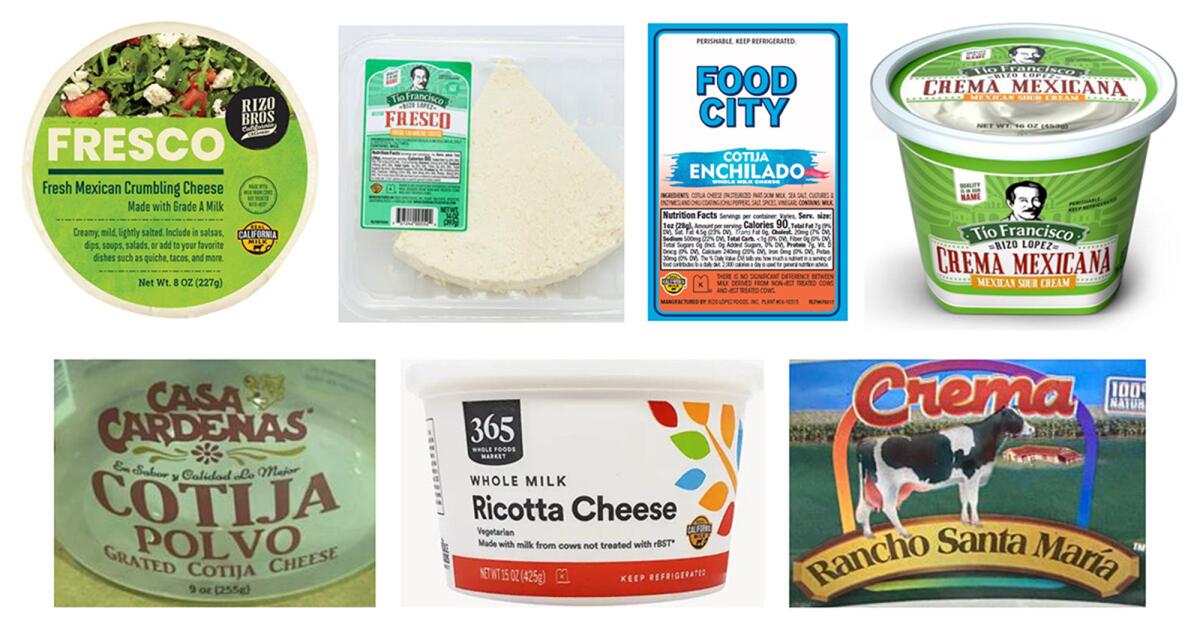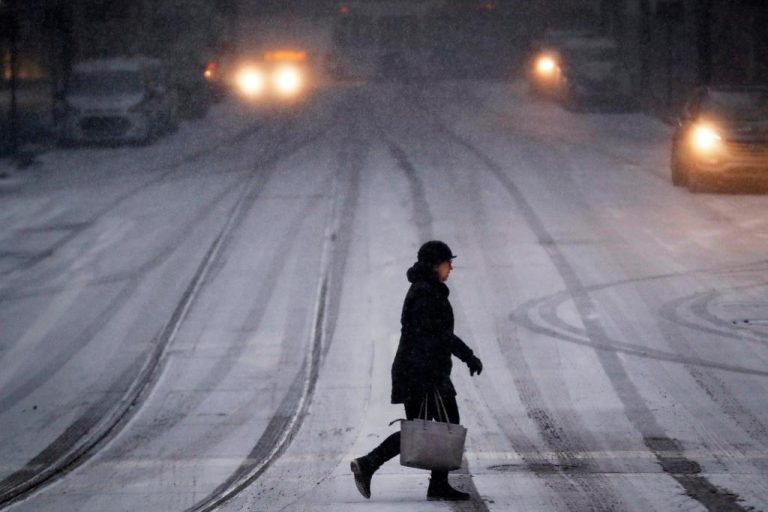
The Centers for Disease Control and Prevention this month announced an expanded recall of dairy products and other foods that may have been contaminated with the bacteria Listeria monocytogenes.
The recalled products — all with ingredients manufactured by California-based Rizo López Foods — include cheese, yogurt, sour cream, salad dressings and kits and other foods that use Rizo López’s products. They have been sold under many brand names and by supermarkets including Trader Joe’s, Whole Foods Market and Marketside.
Most people who ingest listeria don’t get very sick, if they develop symptoms at all. But certain high-risk individuals can fall seriously ill. About 1,600 people in the United States develop serious listeria infections, known as listeriosis, every year — and about 260 of those infections are fatal, said Laura Gieraltowski, a public health researcher with the CDC’s outbreak response and prevention branch.
In the current outbreak, there have been 26 confirmed cases across 11 states, including 23 hospitalizations and two deaths.
Here’s what you need to know about listeria to stay safe.
How does listeria end up in food?
Listeria bacteria are naturally found in soil, which means they also end up on or inside things that come into contact with the soil, such as plants and animals.
“We find it pretty much everywhere in nature when we look for it,” said Catherine Donnelly, an emeritus professor at the University of Vermont who has studied listeria for decades.
The bacterium is also “a hardy germ, and it is tough — it can survive for a long time,” Gieraltowski explained. Food contaminated with listeria can deposit the bacteria on counters, deli slicers and other surfaces where food is prepared and processed, where it can linger and contaminate other foods.
“It forms biofilms, which are structures that allow it to attach to things like stainless steel,” Donnelly said.
Cantaloupes are often implicated in listeria outbreaks because the “rind has got all those bumps and grooves which are really great little spots for bacteria to hide out in” and which resist washing off, Gieraltowski said. Then, when people slice into it, listeria are transferred onto the knife and the parts of the fruit they eat.
The current outbreak primarily affects foods containing soft cheeses such as ricotta and cotija, which have a neutral pH and contain lots of water that the bacteria can use to multiply, said Jasna Kovac, a professor of food science at Penn State University. Listeria don’t grow nearly as well in harder cheeses such as cheddar and Parmesan because those are more acidic and contain less water.
What do symptoms look like, and how can you avoid an infection?
It can take anywhere from a few days to up to three months for symptoms to appear because the bacteria grow so slowly inside the body, Donnelly explained.
Most people who get sick from contaminated food will have flu-like symptoms — fever, diarrhea, vomiting — for a few days, or they may not have any symptoms. They likely will not need any kind of treatment and will start to feel better on their own, Gieraltowski said.
But people who are 65 and older, who are pregnant or who have weakened immune systems are at a higher risk of having listeria infections that spread from the intestines to the blood, Kovac said. When this happens, people tend to experience more severe flu-like symptoms and may need to be hospitalized. A fetus can also be infected, because listeria bacteria can cross the placenta.
For these reasons, the CDC recommends that people in high-risk groups avoid foods commonly contaminated with listeria, including unpasteurized soft cheeses, premade deli salads, and cold-cuts, meats and cheeses that were sliced at a deli but have not been reheated. (The bacteria can be killed by heating food to a high enough temperature.)
Another way to minimize your risk is to put food in the refrigerator within two hours of preparing it, Kovac said.
And always keep your fridge at or below 40 degrees. Many people keep theirs at slightly higher temperatures that can allow listeria to thrive, Donnelly explained. A few degrees cooler can make “a huge difference.”
Wenner Moyer is a freelance writer. This article appeared in The New York Times.







